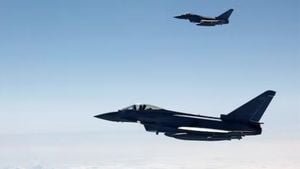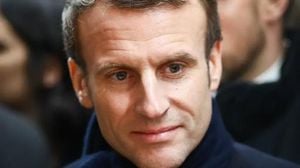The Russian Ruble has seen significant fluctuations recently, with its exchange rate against the US Dollar dipping below 86 Rubles for the first time since September of the previous year. According to Russia's Central Bank data, as of February 25, 2025, the dollar price fell to as low as 85.59 Rubles. This decline could have far-reaching effects on both local and international markets.
The shifts come amid fluctuated political dynamics and are influenced by expectations surrounding potential negotiations between Russia and the United States. Natalia Milchakova, from Freedom Finance Global, indicated, "Support for the Ruble is bolstered by expectations for the continuation of Russian-American negotiations; this is pivotal for investor sentiment."
These movements mark significant fluctuations compared to previous periods—reflecting a major economic shift since August 2024 when the Ruble was trading at over 87 Rubles per Dollar. With the ruble's current position, experts suggest the market is preparing for potential adjustments within the next few months.
Analysts attribute part of this fluctuation to decreased demand for foreign currency within Russia, particularly during December and January when import activities typically drop. Concurrently, exporters have been selling more foreign currency, providing temporary support to the Ruble.
Given recent developments, various financial forecasts suggest the Ruble could continue its trend of decline or stability depending on upcoming negotiations and foreign engagements. Milchakova commented on the market’s projections: "Our targets for the current week are between 86.5 to 89 Rubles for the Dollar, and observing geopolitical movements will be key."
The Belarusian market is also showing results of these fluctuations. According to reports from the Belarusian Currency and Stock Exchange, exchanges have reflected these trends, with the Ruble maintaining significant movements against the Euro and other currencies.
To assess the broader impact, experts note the interconnectedness of the Ruble's performance with Kazakhstan's Tenge, which has recently weakened against the Ruble. Eldar Shamsutdinov highlighted: "The recent attacks on the Caspian pipeline may have caused Tenge's weakness, indicating the deep ties and dependencies we need to address."
With these evaluations, Kazakhstan may increasingly find itself shaping its economic policies to adapt to the fluctuated Ruble’s dynamics. Arsen Temirbaev, another economist, pointed out, "Avoiding excessive strengthening of the Ruble is as important as addressing its current volatility. This can escalate inflation within Kazakhstan."
The observed decrease of the Ruble is not merely self-contained within Russia but bears consequences on its neighbors and trading partners. Market reactions to Ukraine's conflict and external political dynamics continue to be significant elements of discussion for prospective measures against potential economic downturns.
Overall, the fluctuations are symptomatic of broader economic trends, reflecting the importance of comprehensive and adaptable economic strategies. With volatility linked to both internal pressures and external political landscapes, stakeholders across multiple sectors must remain vigilant. Understanding these fluctuations will not just help local investors but will also be pivotal for maintaining stable economic relations across broader markets.



